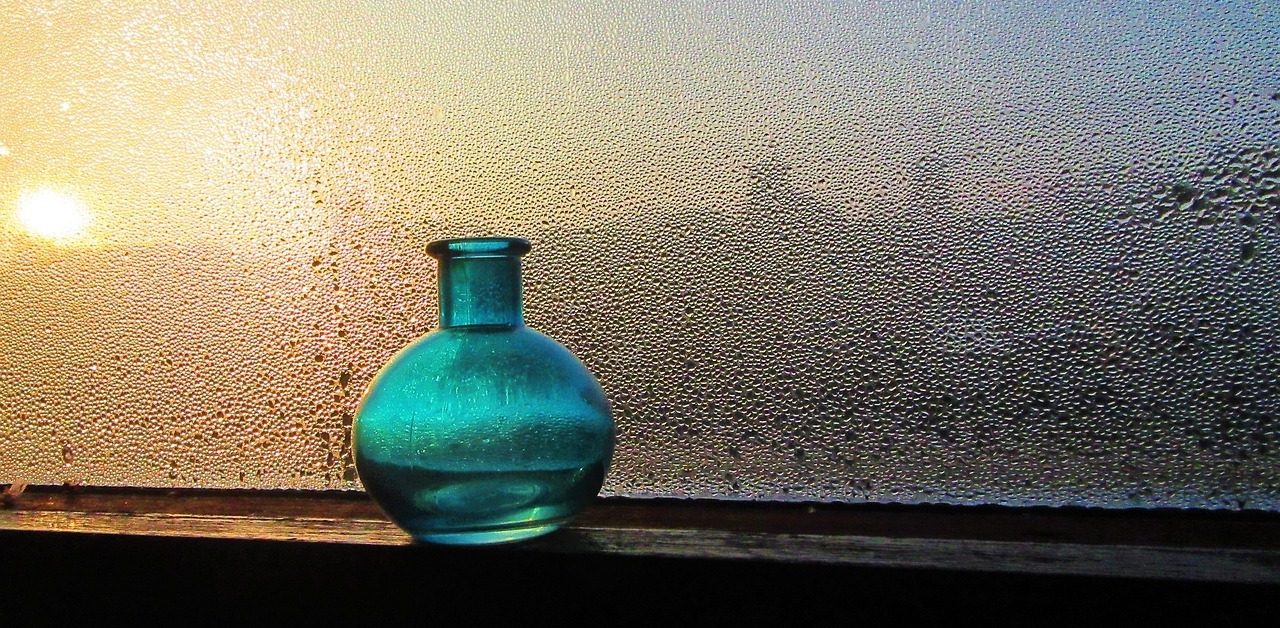Table of Contents
Here at AAA Screen and Window, we’re experts in all things windows, including the common issue of window condensation. Condensation occurs naturally when warm, moist air interacts with a cooler surface to form water droplets. This is particularly noticeable during colder months, when it often forms on windows, both inside and out.
While a bit of condensation can suggest a healthy humidity level in your home, excessive amounts can lead to issues. Too much condensation can cause mold and mildew to form, damaging your property and impacting your health.
Is Condensation On The Outside of the Window Normal?
It is normal to have condensation on the outside of a window. In fact, it’s actually a sign that your windows are working correctly.
When condensation forms on the outside of your window, it’s usually due to the outside surface of your window being a cooler temperature than the dew point temperature of the air outside. This is most likely to happen on clear nights when heat radiates away from the surface of the window, cooling it down. When warm air comes into contact with this cool surface, it cools down and can’t hold onto all its moisture. This extra moisture then condenses on the surface of the window.
So, condensation outside your window is not something to be worried about. In fact, it’s a sign that your windows are energy efficient and doing a great job at keeping heat inside your home.
Causes of Inside Window Condensation
There may be an issue if you notice excess amounts of condensation on the inside of your window. Condensation on the inside of windows is typically due to a combination of factors: high indoor humidity levels, temperature differences between inside and outside, poor ventilation, and outdated or ineffective windows.
High Indoor Humidity
Everyday activities in your home, like cooking, showering, and even breathing, can increase indoor humidity levels. When this warm, moist air meets the cool surface of your windows, it condenses into water droplets. Over time, these can accumulate to become a visible layer of condensation.
Temperature Differences
Another key contributor to window condensation is the difference in temperature between the inside and outside of your home. When the warm air inside your home contacts the cold glass of your window, it cools down. As it cools, the air can’t hold as much moisture, released onto the window as condensation.
Poor Ventilation
Homes with poor ventilation can often suffer from increased condensation. This is because the moist air produced by everyday activities has nowhere to go, causing it to become trapped inside. Bathrooms and kitchens are particularly prone to this, as they generate a lot of moisture.
Outdated or Ineffective Windows
Old, single-pane windows, or those that have been poorly installed, can significantly contribute to condensation. This is because they lack the insulation to prevent the warm air inside from reaching the cold window glass. When the warm air cools on the glass, it releases its moisture, causing condensation. AAA Screen and Window can install new, energy-efficient windows to help with this issue.
How To Prevent Inside Window Condensation
Preventing inside window condensation often involves addressing the issues we’ve outlined above.
Controlling Indoor Humidity
Controlling indoor humidity levels is one of the first steps to preventing window condensation. Try using a dehumidifier to reduce the amount of moisture in the air, particularly in rooms that generate a lot of humidity, like bathrooms and kitchens.
Improving Ventilation
Improving the ventilation in your home can also help to reduce condensation. This might involve using extractor fans in bathrooms and kitchens, opening windows when possible, or installing ventilation systems.
Keeping the House Warm
Maintaining a consistent indoor temperature can help to prevent condensation. This is because warm air can hold more moisture, reducing the likelihood of condensation forming.
Window Materials and Designs
The design and materials of your windows can also play a part in preventing condensation. Double-pane windows have more insulation than single-pane windows and are more effective at preventing condensation.
Click here to see all the types of replacement windows that AAA Screen and Window offers!
Contact AAA Screen and Window For Replacement Windows
AAA Screen and Window can help you to prevent window condensation by replacing outdated or ineffective windows with new, energy-efficient ones. We offer a range of window materials and designs, including custom vinyl replacement windows that are stylish and excellent at preventing condensation.
With our extensive expertise and experience, we can help you choose the right windows for your home and needs. We understand that every home is unique, and we want you to know that we take the time to understand your specific needs and challenges before recommending a solution.
While window condensation is a common issue, it’s not something you need to live with. You can reduce condensation by understanding the causes and taking steps to control indoor humidity, improve ventilation, and maintain a consistent indoor temperature. Replacing outdated or ineffective windows with energy-efficient ones can also make a big difference.
FAQ About Window Condensation
While it’s normal to have some condensation, excessive condensation can lead to problems such as mold, mildew, and damage to window frames and sills.
You can prevent window condensation by controlling indoor humidity levels, improving ventilation, maintaining a balanced indoor and outdoor temperature, and using energy-efficient windows.
High indoor humidity levels, temperature differences between indoors and outdoors, poor ventilation, and outdated or ineffective windows can all contribute to excessive window condensation.
Some condensation is normal, especially during cold weather. However, regular and excessive condensation might indicate a larger issue such as high humidity or poor ventilation.
If you’re noticing condensation on your windows regularly or in large amounts, it may be cause for concern as it could lead to mold, mildew, or damage to your windows and home.
There’s no one-size-fits-all answer as it depends on various factors like the outdoor temperature and humidity levels. However, maintaining a consistent indoor temperature can help reduce condensation.
Fixing excessive condensation may involve several steps such as controlling humidity levels, improving ventilation, and possibly replacing outdated or ineffective windows with energy-efficient ones.
Condensation often comes and goes with changes in temperature and humidity. However, if you’re experiencing regular, excessive condensation, it may indicate an underlying issue that needs addressing.
While condensation on windows can be a sign of high indoor humidity, it can also be caused by other factors such as temperature differences between indoors and outdoors, poor ventilation, and outdated windows.

